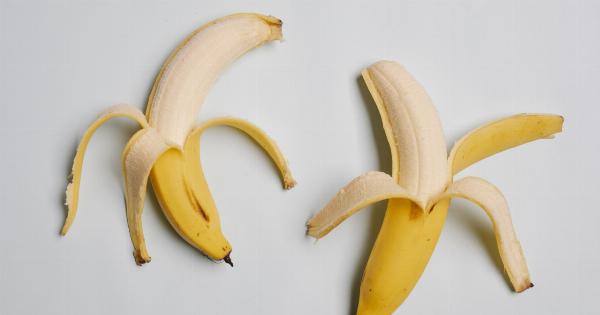When it comes to maintaining a healthy diet, one of the key components is ensuring that you consume an adequate amount of fruits and vegetables.
Fruits are not only delicious and versatile but also packed with essential vitamins, minerals, and antioxidants that contribute to overall well-being. But have you ever wondered how many servings of fruit you should have daily? Let’s dive into the topic and find out more.
The Importance of Fruit Intake
Fruits are a vital part of a well-balanced diet. They provide natural sugars, fiber, and a variety of essential nutrients that promote good health.
The consumption of fruits has been associated with a reduced risk of chronic diseases such as obesity, heart disease, and certain types of cancer. Additionally, fruits can boost the immune system, improve digestion, and contribute to healthy skin.
Different Types of Fruits
Before discussing the recommended servings of fruits, it’s essential to understand the various types available. Fruits can be classified into several categories:.
1. Berries
Berries, such as strawberries, blueberries, raspberries, and blackberries, are known for their antioxidant properties. These small but mighty fruits are rich in fiber, vitamin C, and other beneficial compounds that support overall health.
2. Citrus Fruits
Citrus fruits, including oranges, grapefruits, lemons, and limes, are excellent sources of vitamin C and other antioxidants. They are refreshing, tangy, and add a burst of flavor to your diet.
3. Tropical Fruits
Mangoes, pineapples, papayas, and bananas fall into the category of tropical fruits. These fruits are not only delicious but also provide a good amount of vitamins, minerals, and fiber.
4. Stone Fruits
Peaches, plums, nectarines, and cherries belong to the stone fruit family. They are characterized by their hard, stone-like pits and offer a wide range of nutrients, including potassium and vitamin C.
5. Melons
Watermelon, cantaloupe, honeydew, and other melons are perfect for keeping you hydrated due to their high water content. They are also a rich source of vitamins A and C.
6. Apples and Pears
Apples and pears are popular fruits that come in a variety of colors and flavors. They are high in fiber and offer a range of vitamins and minerals.
Recommended Daily Servings of Fruit
The United States Department of Agriculture (USDA) provides general guidelines regarding the recommended daily servings of fruits. The ideal amount can vary depending on factors such as age, sex, physical activity level, and overall health.
Here’s a breakdown of the suggested fruit servings:.
1. Adults
The USDA recommends that adults consume 1.5 to 2 cups of fruit per day. This can be achieved by consuming whole fruits or 100% fruit juices without added sugars. It is important to choose a variety of fruits to ensure a diverse nutrient intake.
2. Children
For children, the recommended daily servings of fruit vary based on age. It is suggested that children aged 2-3 years consume about 1 cup of fruit per day, while those aged 4-8 years increase their intake to 1-1.5 cups per day.
Children aged 9 and above should aim for 1.5-2 cups of fruit every day.
3. Pregnant and Breastfeeding Women
Pregnant and breastfeeding women require additional nutrients to support their own health and the growth of their babies.
The USDA recommends that they follow the same guidelines as adults but adjust their intake based on their individual needs and consult with healthcare professionals.
Fruit Serving Sizes
Understanding the serving sizes of different fruits can help you determine how much to incorporate into your daily diet. Here are a few examples of typical fruit servings:.
1. Whole Fruits
A small-sized fruit, such as an apple or orange, generally counts as one serving. For larger fruits, like grapefruits or melons, a single serving can be half of the fruit.
2. Sliced Fruits
If you prefer sliced fruits, one serving typically consists of ¾ to 1 cup of chopped fruit. This can apply to fruits like strawberries, pineapples, or mangoes.
3. Fruit Juices
When consuming 100% fruit juice, a standard serving size is ½ cup. Be cautious of added sugars and aim for options with no added sugars or artificial sweeteners.
Conclusion
Incorporating an adequate amount of fruits into your daily diet offers numerous health benefits.
By following the recommended servings of fruit, you can support your overall well-being, reduce the risk of chronic diseases, and ensure a sufficient intake of essential nutrients. Whether you prefer berries, citrus fruits, or tropical delights, there is a wide variety to choose from. Remember to opt for whole fruits whenever possible and consult with healthcare professionals for personalized advice based on your specific needs.



























